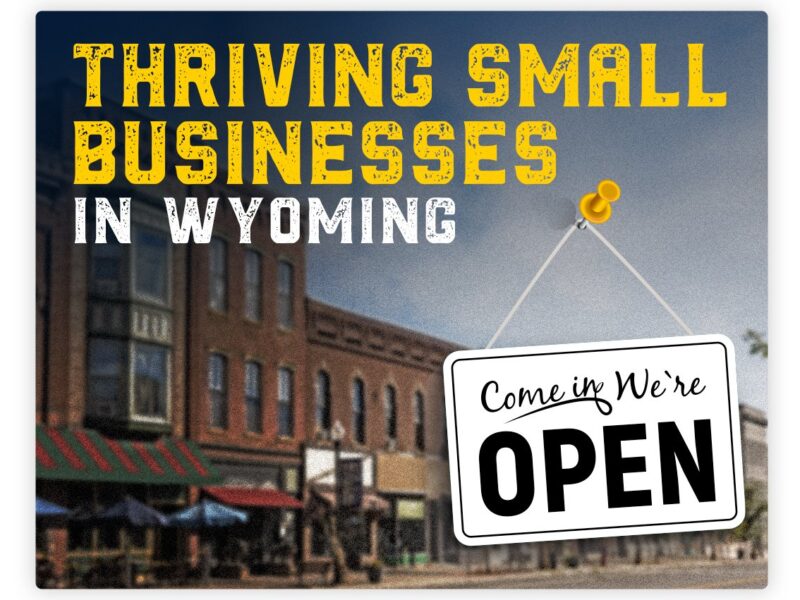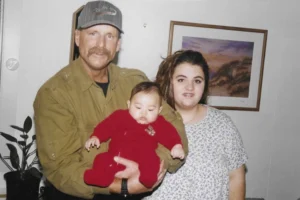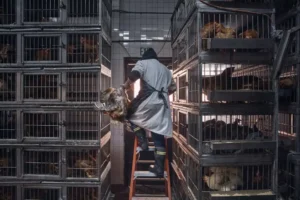THRIVING SMALL BUSINESSES IN WYOMING: Lovell Candy Company Creates Big Buzz
Honey, bees and family recipes are Queen Bee Gardens’ secret to nearly 45 years of sweet success
- Published In: Other News & Features
- Last Updated: May 29, 2023

By Bob Wooley
Special to the Wyoming Truth
An old grocery store tucked away in the small town of Lovell, Wyoming, might just be one of the sweetest spots in the entire Cowboy State. Inside, candy makers, chocolatiers and confectioners are busy making treats enjoyed worldwide. It’s a virtual beehive of activity, which is only fitting because the old grocery store is now the home of Queen Bee Gardens.
Ben Zeller, 41, part-owner and head beekeeper, spent over a decade learning the ropes of the family business, doing everything from working on the website to packing and shipping products. But it was the bees he found most intriguing.

These days, his efforts are focused on the full-time care and management of the little workers in the hives. He wanted to make the transition sooner, but after so many years being involved in other aspects of the business, it took over a year to prepare his replacements to assume his former responsibilities.
Zeller didn’t always aspire to be a beekeeper in a thriving candy company. But if you believe in things that are meant to be (bee?), it may have always been the plan.
“I think the interest in the bees really came from just working here,” he said. “But for about the last four years, I’ve kept bee colonies in my backyard. I’d just work them in my backyard and learn about them, read and study — continue my education — and the interest kept growing from there. I learned to graft larvae and make queens. We actually have about 100 grafts incubating right now that we’re going to put out next week. So, it’s been quite a learning process.”
Zeller came onboard in 2008 after graduating from the University of Wyoming with a degree in business administration. He originally planned to work for a large corporation, but family ties pulled him back to Lovell when his father, Gene, one of Queen Bee’s senior partners, asked him to lend his expertise.

Zeller’s grandparents, Clarence and Bessie Zeller, who ran a small farm just east of Yellowstone National Park, produced honey as a way to make extra income. Bessie’s idea to make candy using family recipes caught on, and in the mid – 1970s, three of Clarence and Bessie’s six adult children returned to the farm to help with the business. And in 1979, the Zellers started making their signature honey pecan pralines, now known as Pecan Pearls.
What started as an extra source of revenue for a small family farm has grown into a thriving enterprise with around 30 employees and nearly $1 million in annual sales.
The business of bees
To be sure, the Zeller family has played a major role in the success of Queen Bee Gardens, but let’s face it: Without the untold thousands of not-so-silent, flying partners, the whole thing might never have taken shape. Bees called “Little Johnnies” were the original inhabitants of the Queen Bee hives. Collected by Clarence Zeller’s father, Ben’s great-grandfather, from trees on the Shoshone River bottoms, the Little Johnnies were said to have quite a sting and a bit of a mean streak. Zeller said the hives are now mostly comprised of Carnolian and Italian honeybees.
“But I’m sure there’s still a few Little Johnnies in the mix,” he mused.

Now for a little bit of Bees 101. According to the United States Geological Survey, there are over 20,000 known bee species in the world, of which around 4,000 are native to the United States. Honeybees are not native to North America; they were brought here by European settlers. Worldwide, there are eight known species of honey bees, with beepods.com reporting six main bee stocks available in the U.S. Of those six breeds, Carnolian and Italian are two of the most widely used.
To give some perspective on the scale of the Queen Bee Gardens’ bee biz, it’s big—with hives running alongside the Shoshone River all the way west, beyond Cody.
“We’re running close to 3,000 colonies of bees,” Zeller said. “And if you had all of those just in one spot it would be mayhem. So, we have 100 different locations spread out between the base of the Bighorn Mountains all the way to South Fork.”
Zeller said they rent small parcels of land from farmers for not much more than a bucket of honey. There are somewhere between 24 to 32 colonies per location, and it takes four full-time beekeepers (including Zeller) to tend those colonies.

It’s late spring and things are busy. Aside from Zeller, his brother, Jason, and cousin, April, are part owners and actively involved in the business. Zeller sometimes has to call in one of his recently retired uncles to help out as well. And he acknowledges there’s very little time to do much — even sleep — this time of year.
“We’re full steam ahead right now,” Zeller said. “We’re working 15 – 16 hour days.”
He went on to describe a marathon 24 hours in which he and a co-worker unloaded a truckload of empty honey barrels, reloaded the semi-truck with full barrels of honey for shipment, placed over 400 colonies in 13 locations in the Powell area and ended the shift around 4 p.m. the next day after putting queens out in different colonies.
The bees work long days, too. They’re sent to California each November to pollinate almond orchards. Then they’re shipped back to Wyoming in the spring to get reestablished and ready to produce that liquid gold all summer. Usually by sometime in June, Zeller said, the bees are producing enough honey that he and the other beekeepers can start collecting the excess (honey they don’t need to sustain the colony throughout the winter) that will be used to make candy.
The full-blown honey harvest starts in August. It’s stored in two 50,000 pound tanks and then transported in smaller batches to the candy factory in Lovell. Zeller said the Queen Bee and other stores across the nation that sell their goods will go through around 100,000 pounds of honey per year — about 70,000 pounds for candy making, with an additional 30,000 pounds of surplus honey being sold to a third-party buyer.
“Most of the honey we keep goes into making different varieties of Honey Caramels,” Zeller said. “I believe one year we made over 1 million Pecan Pearls, and that’s just one type of candy we make,” he said. “They cook [candy] about twice a week at Queen Bee and do about five batches per cook day, which equates to around 50,000 pieces of candy per week.”
The candy, including Honey Caramels with flavors like huckleberry, mint, strawberry lemonade and caramel apple, are wholesaled across the U.S. and sold in locations around Wyoming. But you can always purchase via the company’s website as well.
And if you’d like to see the magic for yourself and maybe get a fresh sample or two, Queen Bee Gardens offers tours — you just need to call ahead.













